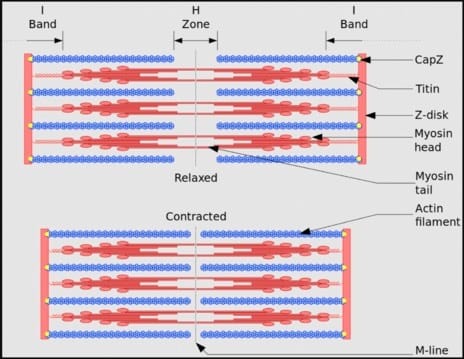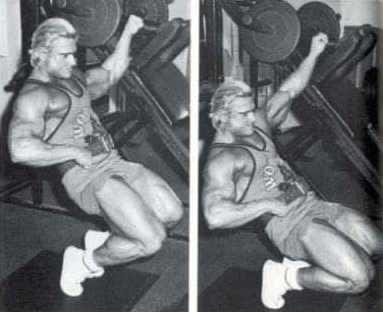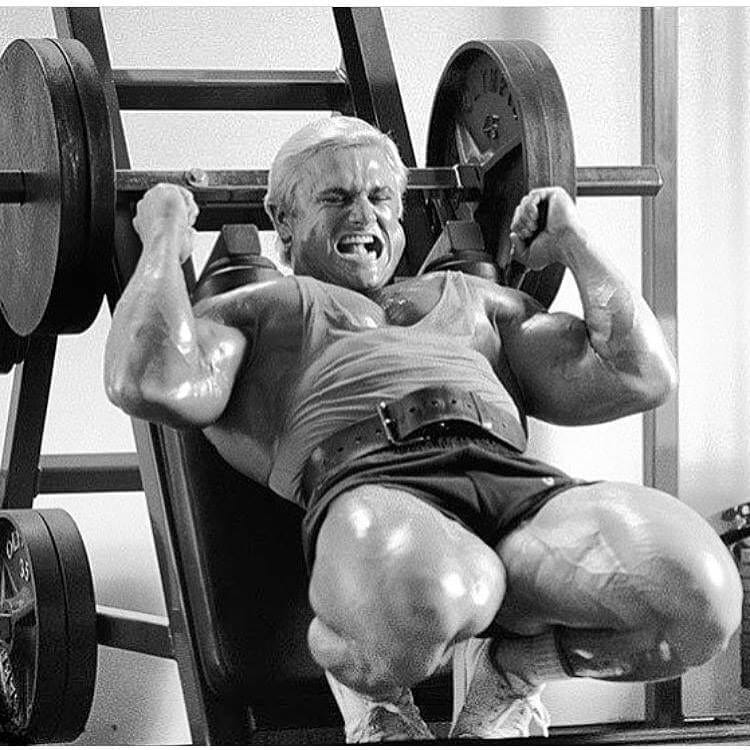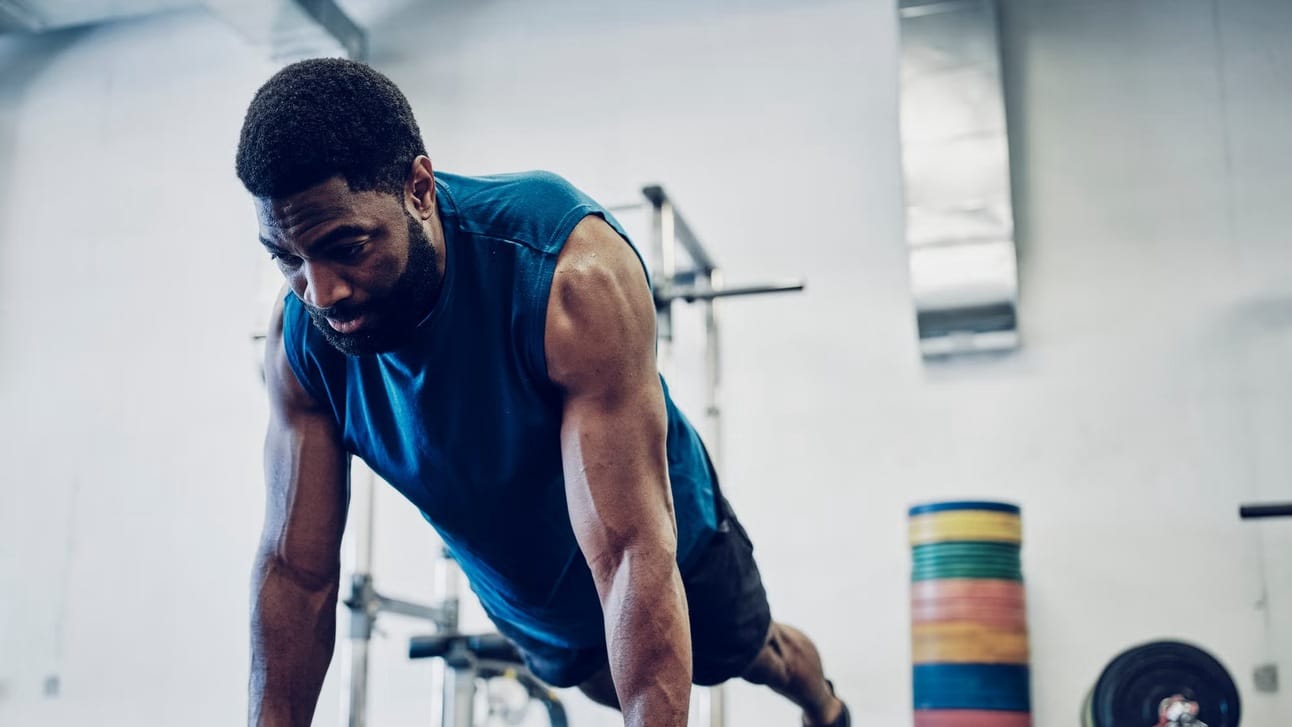The last few weeks I’ve been overly stressed.
Anxiously pondering the future, worrying about the fact that I was worrying and carrying around a tightness in my chest.
But the funny thing is this:
There wasn’t anything to be worried or stressed about.
So why was I?
After an entire week of life discomfort I was fed up. And I did what I always do when something like this happens. Attacking the problem from all angles.
But no amount of:
Psychological massage
Iterations on my future plans
Obsessive dialing of my health
Would get rid of it.
And my inability to let go of the friction I’d somehow manifested in my life was now too great to ignore.
My creativity started to suffer.
I began procrastinating more than ever before.
And my whole life felt like one big should that I would not do.
No amount of effort would slow down my travels down the stream of anxious thought.
So I gave up.
But in that moment of complete renunciation, as I collapse into my chair the answer suddenly became clear.
My back, my neck and just about every limb of my body was stiff as a rock.
And when I started to actually pay attention to my flexibility and mobility in well over a year — the sense of friction in my life slowly started to disappear.
And that’s exactly what I want to share with you today.
If You’re Healthy, You Shouldn’t Notice It
Men are born soft and supple; dead they are stiff and hard. Plants are born tender and pliant; dead, they are brittle and dry. Thus whoever is stiff and inflexible is a disciple of death. Whoever is soft and yielding is a disciple of life.
Your life sucks because you can’t touch your toes.
Really.
Most people are stiffer than a brick house without realizing it.
They can’t move smoothly, get close to the ground or walk around without looking like a penguin.
They can’t see how doing some stretches will improve their appearance, success with the opposite gender or anything else about their lives — and so they completely ignore it.
But they’re not looking beneath the surface.
Because when you ignore one of the most essential functions of your body — you suffer for it (even if you don’t realize it):
When your mobility is crap, you move through life with chronic pain and discomfort thinking it’s normal.
When your flexibility is that of an immobile object, your blood flow and recovery goes down the drain.
With stiff and rigid muscles your body can’t align itself and your posture collapses.
These points are bad enough.
But when you actually follow them deeper, you start to see just how important mobility and flexibility really is.
When your blood flow stagnates, your brain doesn’t get the nutrients and oxygen it needs. And you your ability to use your mind, creativity or other cognitive functions becomes drastically more difficult.
When your body is chronically stiff and tense you’re sending signals f stress to your mind and negative emotions become trapped in a feedback loop. You start walking around with this heaviness in your throat and tightness in your chest.
Eventually, you begin to live in a state of fear, stress and anxiety. Which is not something that aids in living a life you enjoy.
All this adds up to a sense of resistance you feel day to day. A sense of friction to anything you want to do in this life.
The relationships and connections you want to form.
The things you want to build, create and accomplish.
The places and things you want to explore and experience.
Because if you’re living in fear and anxiety, forming deep connections with people becomes a next to impossible task.
If your mind and creativity isn’t working due to stress, it becomes extremely difficult to create and build solutions for yourself and in your career.
And if you can’t move around smoothly, exploring and experiencing the world turns into the biggest hassle of your life.
In other words:
Crappy mobility makes life difficult.
And it’s difficult enough as it is. You don’t need to go through it feeling heavy, immobile, clumsy, disorganized, inflexible, rigid, uncomfortable, irritated and stale. Physically or mentally.
Because what you have to realize is that a rigid body is a rigid mind. And because the world around you is in fact moving and evolving, both lead to death.
When you can’t adapt to the changing environment you get left behind. When you forgo your creativity you stop growing and start dying. You become a log getting lodged in-between two rocks in the river of life.
You shouldn’t have to have fight your way through life. Because that’s how you miss out on it. That’s how you turn it into a sure.
“But Simon. What about the meaning you find in struggle?”
You’re missing the bigger picture.
Wouldn’t you rather find meaning in the struggle of achieving something great than in the struggle of getting off the couch?
If you have any sense, you want as little life friction as possible.
Because if you’re on the other hand constantly aware of your body — your life sucks. Because it can’t not suck.
Because if the state of your biology is constantly pulling your attention, you’re never actually living where you are right now. If you’re always aware of your aching muscles, your stiff neck and your foggy mind, it’s like going through life with a rock in your shoe.
A healthy person doesn’t realize he is healthy. His biology is working so smoothly that it slips his attention.
And in the same way that you forget a pair of well fitting shoes, when you’re healthy — what’s left is only experience. Only life.
This is why you should care about becoming more mobile and flexible. Because it means to become more fluid. It means being able to do what you want with your life.
It means to remove the friction of existence.
Which is the whole purpose of health. To make experiencing and doing your thing in this life easier.
A Flexible Body, A Fluid Mind
Fixation is the way to death. Fluidity is the way to life.
The healthier you get, the lighter you become.
When you become more mobile and flexible, a few things happen:
Better recovery
Less chronic pain
Improved posture
Improved blood flow
Your muscles can actually relax and grow stronger. And as they heal, the sense of chronic pain and discomfort more or less disappears.
You unlock more of your metabolism and start burning fat without trying (As we talk about in “read this if you want to stay at 12% body fat permanently”).
When you unlock more of your range of motion your posture improves. Your physique can literally look twice as good and the self confidence you get, improve just about every area of your life.
With an improved blood flow comes longevity and mental and physical performance. And you look, feel and live better (as well as longer).
And just as the problems go deeper than merely the physical, so does the benefits.
Because when you open up your body — you open up your mind as well:
More creativity
Higher presence
Increased pain tolerance
With a higher blood flow your mind can actually begin to work.
Your creativity and pattern recognition skyrockets, your focus becomes clearer and you more than likely preventing neurological disease progression (but we’ve already talked about this).
With less chronic pain you’re removing the metaphorical rock in your shoe and can experience life more fully. You become more present and actually able to enjoy this shit.
When you learn to become more flexible despite pain, you increase your brain’s ability to handle pain. You become more mentally strong and able to do a lot more in life as a result.
And when you open up your body and mind, you cut off the feedback loop of negative emotions
When your body is able to relax that stress and fear response isn’t perpetuated. So when you handle your emotional problems, they don’t come back to bite you in the ass later as repressed in the body.
When you’re truly mobile and flexible — your mind and life is to.
And what is fluid is what is strong. Like water changing shape to navigate through all obstacles, your adaptability becomes your key to greatness.
But to get to that sense of lightness and fluidity — we need to understand what mobility and flexibility is.
And how we can flow with it.
Your Biological Shackles
Every year you lose 1% of your mobility.
This happens partly because your sarcomeres (the basic units of muscle contraction) become locked and chronically contracted.
Which happens due to inactivity or overactivity (coupled with a lack of stretching or mobility training)

Sarcomere. Relaxed Vs Contracted.
This is the beginning of muscle knots (a bunch of chronically contracted myofibrils). Which causes blood flow to become extremely restricted and waste products like lactic acid and cytokines become trapped.
This causes your muscle fibers to become weak and damaged. All ending in the sense of chronic pain and discomfort. No bueno.
In other words, your muscle fibers are never relaxing. And so they can never grow stronger, only get weaker.
The other part to flexibility and mobility is your tendons.
These are the organic material that binds muscle to bone. And if you don’t do anything about it, the fibers in your tendons will become disorganized.
This causes the blood flow to become impaired and your tendons can’t lengthen to the same degree anymore. And so your ability to move through life follows suit.
It also leads to chronic pain, discomfort and increased risk of injury. This is how you rip your muscles from the bone. Again, not that fun.
In the process, emotions get trapped in the body.
Because you can think of emotions as the body’s reaction to thoughts.
Let’s take the example of stress.
If you entertain a series of thoughts you interpret as stressful, your body responds by flooding you with the stress chemical cortisol. This tenses and activates all your body and puts you on edge. And with it comes feelings of anxiety and fear.
This is a completely normal response.
But when the stressful event is over, your body is supposed to relax and relieve you of the tension. So that you can actually recover and not be draining all your precious energy.
But when your mobility is low to the point of you being an immobile object, you’re never cutting off that stressful response. And you’re perpetuating the feeling of being stressed.
In other words; you’re stressed because you’re stressed because you’re stressed.
And as long as your body is tense, you’re not getting rid of it.
In other words, if you want your anxiety to go away — you need to open your body.
To summarize…
This is why you get stiff:
Your sarcomeres become chronically contracted
Your tendon fibers become disorganized
And unless you do something about it, your lack of mobility and fluidity will continue to spiral until moving through life becomes an impossibility.
I know so many athletes, bodybuilders and regular people who regret not training mobility and flexibility when they were younger.
I certainly wish someone would have told me this shit when I was.
But all is not lost.
By understanding the mechanics of flexibility and mobility (as you almost do now), we don’t have to end up there.
Let me put you onto something.
A term I’ve created describes this method pretty well:
"Forceful relaxation”
Because as the name suggests, you’re forcing your muscles and tendons to relax. Let’s use the example of stretching.
When you’re holding a stretch, you’re placing tension on your muscles and tendons. And the longer you hold that stretch, the more your myofibrils will start to release and lock out.
(You can imagine a million microscopic ”clicks” as you’re doing a hamstring stretch.)
And when most of your myofibrils are locked out (it’s difficult to get all to do so), the tension is put on your tendons.
As a result, the fibers in your tendons begin to organize themselves following the direction of the force.
This de-scrambles your tendon fibers and makes them fit for fight. And so the chronic pain, tightness and lack of mobility slowly begins to disappear.
Now that you have the basic understanding…
Let’s get into the tools you can add to your daily protocol.
Reaching Fluidity
Be water my friend
Let’s put forceful relaxation into practice.
There are 5 tools that will really open up your body and mind:
Stretching
Mobility training
Heat exposure
Massage & tapping
Fluid jumping
Let’s dive in.
1. Stretching
Stretching is the great organizer of your macro biology.
As we talked about, it straightens out quirks, chronic contraction and disorganized tendon fibers.
Creating peace, fluidity and lightness in your life.
Here is how you implement it into your life:
Duration - A stretch should be held for 30 seconds minimum to have any lasting effect.
Frequency - To see any significant effects, you need to stretch a muscle for 5 minutes a week total. In other words, you’ll need to to 10 sets of stretches per muscle group a week. Which is a little more than once a day. I prefer to stretch all muscles for 1 set in the morning, afternoon and evening. It’s very low cost in time and gives you a lot of bang for your buck.
Intensity - Any stretch should be performed to the point of feeling some pain. As you begin feeling some discomfort, you can either force yourself down into the stretch or practice relaxing into it. The ladder is probably superior as it also improves your ability to deal with pain. You can see this phenomenon with yogis.
Types of Stretches - You need to have at least one stretch per every major muscle group. These are your chest, back, shoulders, traps, glutes, quads, hamstrings and calves. Here are my favorites:
Chest wall stretch
Dead hangs
Reverse shoulder stretch
Cobra
Neck tilts
Seated glute stretch
Hyper extended toe squat
Hamstring and calve standing stretch

(A visual to clear things up)
Advanced tactics
To get the most out of your stretching practices — you need to utilize how your muscle fibers connect to your nervous system.
All your muscle fibers are wrapped by something called spindles. These are little complexes that sense tension and load on your muscles. And if it’s too high and too sudden, they send a signal to your brain causing your muscles to contract in order to prevent injury.
This is called ’the stretch reflex’.
And it’s what the powerlifter leverages when he’s squating. By going down rather rapidly, the tension becomes very high and his muscles atomically contracts, allowing him to bounce back up with the weight.
When you stretch, you’re slowly decreasing the effect of these spindles, allowing you to go deeper into it and organize your tendon fibers as well as fully lock out your myofibrils.
(This is why people will tell you to avoid static stretching before weight lifting.)
And because of how your muscle system works, you can intentionally decrease the effects of these spindles to get into a deeper stretch and more fully organize your body.
You do this by activating the antagonistic muscle to the one you want to stretch.
Let me give you an example.
If you flex your bicep, the spindles in your triceps automatically loosens their grip to allow you to actually use your biceps more fully.
So when you’re stretching, you can flex the opposite muscle to get into a deeper stretch.
As an example:
If you’re doing a hamstring stretch, you can flex your quadriceps for about 20 seconds before going into it to achieve an even greater stretch.
(If you try this now, you’ll find that you can go much deeper into the stretch than before).
Another part is utilizing the GTO (golgi tendon organ).
This complex does the opposite of muscle spindles. If they notice that the load and tension not the muscle fibers are too strong during contraction, they inhibit the contraction causing the muscle to relax.
This is what happens when you’re placing tension on your muscles by stretching for prolonged periods of time. It’s also partly why any stretch should be held for about 30 seconds to achieve any noticeably beneficial result.
2. Mobility Training
Why should you bother with mobility training?
Well…
Because when you use your body in flexible positions, you unlock the ability to perform in those situations.
In other words, stretching is to unlock those states of flexibility. Mobility is developing your ability to use your body in those states. The combination of both is how you truly become fluid for life:
The ability to climb up obstacles
The ability to get close to the ground with ease
The ability to perform a deep squat with power
It also increases blood flow to your muscles and tendons, leading to better recovery and less pain.
Here are my favorite ways of going about this:
1. Quadrupedal movements
These are movements you perform on all 4.
They include getting close to the ground and moving around in stretched and flexible positions.
(Basically different variations of crawling)
Some of the best ones are:
Lizard craws
Bear crawls
Crab crawls
Aim for 2 minute sets at least with one of these, at least once a day.

Pretend you’re this guy right here
2. Training with full ROM
The bodybuilders who don’t get stiff train with full range of motion.
It won’t give you the benefits of improved flexibility, but it will prevent you from becoming a stiff mess.
So whenever you’re working out (ask especially during weight lifting sessions), always fully lock out your joints.
This will not only keep stiffness away but also lead to much better results in hypertrophy and strength building.

Couldn’t resist using another example from Tom Platz
3. Hyper ROM calisthenics
This is similar to just training with full ROM.
But it’s more intentional. And as apposed to weightlifting, with calisthenics you can extend your joints as much as possible without that big risk of injury.
Here are the most bang for your buck exercises:
Hyper ROM Squats
Hyper ROM Pullups
Hyper ROM Pushups

This guy is doing a good job
3. Heat Exposure
If you’re not practicing what it’s like to be in an oven — you’re missing out.
When you expose your body to immense heat, you’re supercharging your blood flow. This happens because your body doesn’t like to be 100 degrees celsius and eagerly wants to get rid of the heat.
But as a side effect, the increase in blood flow is cleaning up your muscle cells and tendons from accumulated waste products. This allows them to relax, loosen up and recover more fully.
(Which is very convenient when you’re trying to improve mobility).
Heat exposure also up-regulates heat shock proteins which help to keep your muscle fibers and cells in line, strong and as a consequence — flexible.
So how do you implement heat exposure into your lifestyle?
The gold standard is the sauna.
You can use hot baths and showers well. But the problem is that they can’t get as hot. Because if they did, you would boil yourself alive. Which kind of goes against the point of why you were doing it in the first place.
If you don’t have a sauna, most gyms do.
And if yours doesn’t, consider picking a better gym.
Seriously.
And if you don’t have a gym membership — what are you doing?
When using the sauna, 20 minute sessions 3 times a week should do the trick. But as with everything health related, you should experiment with what makes you feel the best. Because that is what health is for.
I for one know that when I get below 3 sessions a week I start getting this unbelievable tension in my traps and upper back.
But that’s me.
Figure out what’s you.
4. Massage & Tapping
Massage works in a similar way to heat exposure.
It increases blood flow to your muscles and tendons. But it also has some unique benefits and use cases.
With massage you can be much more precise and deliberate with where you want to induce the relaxation and blood flow. You can for example target a certain muscle knot and work it until it relaxes.
It also has some interesting benefits on your nervous system.
But everyone doesn’t have access to a massage therapist on 24 hour standby.
This is where tapping comes into the picture.
This is basically self massage. It involves lightly drumming on your body with your fists and palms to induce a similar effect of that of massage.
This is a lot easier, much more time efficient and still has remarkable benefits.
I usually do this as soon as I wake up and before I go to bed.
Here are some examples of how you go about it.
I would highly recommend checking out Mike Chang on either YouTube or instagram for a more full breakdown.
Check out this one if you’re interested.
5. Fluid Body Jumping
This is next to every mobility practice combined into one.
It improves mobility
It increases blood flow
It stretches your muscles
It calms down your nervous system
This is how you do it:
Loosen up your whole body and let your shoulders, neck and ever muscle in your body be dragged down towards the ground by gravity.
Then start lightly jumping on your toes. Each down you land, make it a point to let your whole body be pulled down towards the ground.
Do this for 2 minutes and see how you feel.
You could do this in right after or before bed or for the best effect — both.
Again, Mike Chang is one of the greats of this.
So check this video out for more clarity.
The Flexible Life
A fluid body is a fluid life.
The closer you come to flexibility, mobility and adaptiveness — the closer you come to a life of no resistance.
A life without a constant tightness in your chest, a lump in your throat and mental friction to anything you want to do in life.
You become light as a feather and existence becomes more and more like a dance.
You live longer, look better but most importantly feel more fully.
You’re no longer carrying around trapped emotions in your body and become freed from your biological shackles.
Able to do the things you want, be unbelievably creative and fully experience life itself.
And the path to the fluid life involves:
Static stretching
Mobility training
Heat exposure
Massage and tapping
Fluid body jumping
”Fixation is the way to death. Fluidity is the way to life” - Miyamoto Musashi
That’s it for this week.
If you want to unlock more of existence, check out some my previous letters, subscribe down below and follow me on X.
Thank you for your time my friend.
I’m Out.
Simon Frisk
